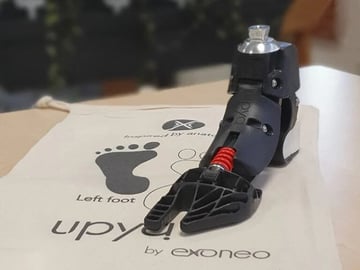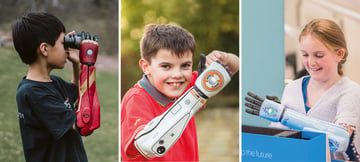3D printed prosthetics? Why not!
According to Amputee Coalition, in the United States alone, there are almost 2 million individuals coping with limb loss. Roughly 185,000 amputations happen in the United States each year due to causes differing from vascular illness to trauma. What's more, prosthetics can cost anywhere from $5,000 to upwards of $50,000.
Prosthetics become much more pricey when taking into account that they're best when customized fit, making production sluggish and pricey. This is where 3D printing has shown to be an unbelievable option for producing prosthetics, bieng a cost effective manufacturing method that can deal with various products and provide easy personalization.
Nowadays, there are lots of business positioning their bets on 3D printed prosthetics and working to make them accessible to everyone who needs them. Even house 3D printers are much more economical than a conventional prosthetic limb, and you can find DIY prosthetics that are totally free to print yourself.
In this article, we'll highlight the most promising and effective 3D printed prosthetics out there. Continue reading and be surprised!
Category: Legs

Amputations bring significant modifications to an individual's life, and the process can be a difficult shift. With contemporary prosthetics, it's possible for some to restore mobility and their freedom of motion.
There are prosthetics for below the knee amputations and transfemoral amputations, with the previous being the most developed in regards to 3D printing. There are even some prosthetics that come with microprocessors to help improve movement!
Unyq is a pioneering prosthetics business that started making leg covers for prosthetics. Their stated objective was to have prosthetics become more stabilized and show that they can reveal personality and individuality.
Using 3D printing and photogrammetry to create custom prosthetic covers, Unyq has actually recently begun producing 3D printed prosthetic leg sockets, which will be contributed to their line of product by the end of 2021.
These lightweight and aesthetically enticing sockets also consist of sensing units that tape the health data of the wearer. As a significant turning point, they've been approved in line with ISO standards.
Material: Polyamide
Printing innovation: SLS
Designed by: Unyq
Cost: ~$ 395.
Category: Feet

The most common use of a prosthetic foot is to allow the user to stroll. There are also people who can not walk but still have prosthetic feet for cosmetic factors. Typically, prosthetic feet are made in 2 types: strong ankle cushioned heel (SACH), or flexible keel setups.
The difficulty for 3D printing is to achieve the same level of convenience and movement that's possible from standard materials such as neoprene or urethane foam.
Upya, which implies "clean slate" in Swahili, is a 3D printed prosthetic foot that aims to make prosthetics more accessible in developing nation. The parts are made to be versatile to each wearer as well as being simple and fast to put together.
This design utilizes biomimicry to attain a strolling feeling closer to truth. Its kind is supposed to simulate the real anatomy of the ankle, heel, and toes, and utilizes a cushioning system of springs to imitate the tendons of the human foot. People who have evaluated gladly say that it's the closest they've felt to strolling considering that losing their foot.
Products: Fiberglass, strengthened polyamide, broadened polyurethane, aluminum.
Printing technology: SLS.
Created by: Exoneo.
Cost: Contact for estimate.
Category: Arms

Prosthetic arms describe the mix of arm, lower arm, and hand, or forearm and hand prosthetics for those who've lost all or part of their arm. There are many types and they are a few of the complicated prosthetics out there due to the accuracy of movement they require. There's still a long road ahead in their development and refinement.
According to Arm Dynamics, there are 3 primary types of arm prosthesis: passive, body-powered, and myoelectric upper limb. Passive arm prosthetics are made from silicon and painted to match the skin color of the wearer. These are available in only one position, or with joints that the user can accommodate with their other hand to enable different fixed positions.
Then, there are body-powered ones that have particular geometry depending upon their usage (getting, pointing, or pressing, for instance). These are typically made of aluminum, titanium, or steel. Myoelectric upper-limb prosthetics utilize electrical signals from the muscle in the residual limb to send out directions to the prosthetic arm and hand to accomplish practical movement.
Out of the formerly pointed out types, myoelectric prosthesis is the one 3D printing has actually been helping to greatly advance and make accessible for all who need it.
The Hero Arm is "the world's very first clinically-approved 3D printed bionic arm, with multi-grip performance and empowering aesthetic appeals". Thanks to it being 3D printed, it's a more budget friendly option that has myoelectric functionality.
Readily available in different styles, motivated by Iron Man, Star Wars, and Frozen, among others, these arms can give confidence and reveal the character of the user. What's more, they have lots of functionalities such as grab, pinch, high five, and thumbs up.
Material: Nylon 12 (previously PLA).
Printing innovation: SLS (previously FDM).
Designed by: Open Bionics.
Cost: ~$ 272-$ 820 for covers, contact for prosthetics prices.
